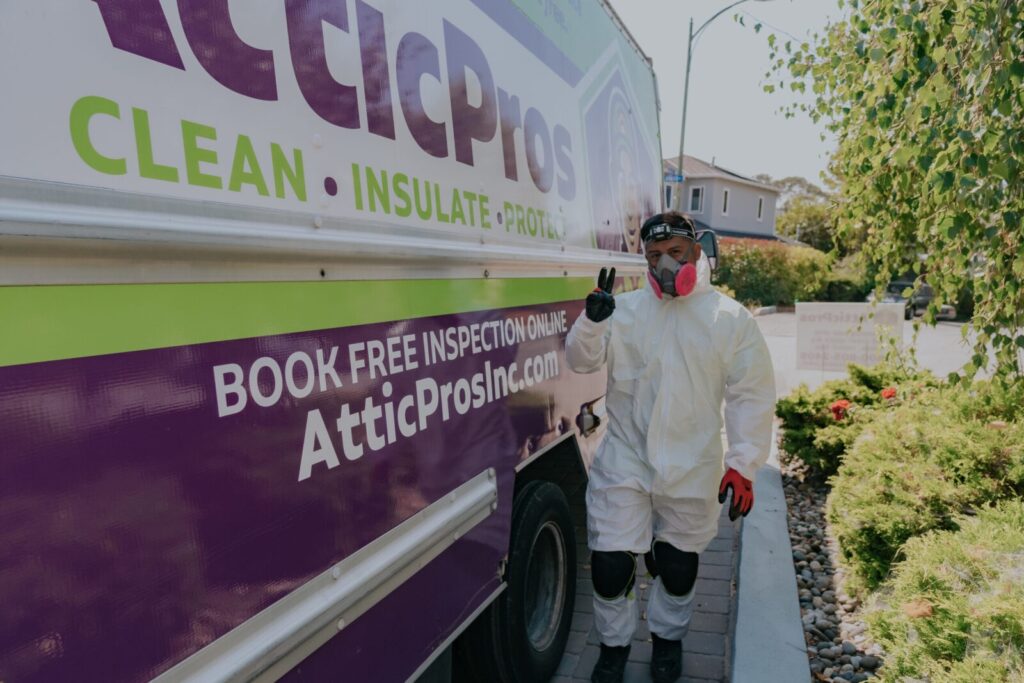Crawl Space Moisture Barriers: Stop Mold Before the Holidays
As the holidays approach, most homeowners are busy decorating, cooking, and preparing for guests—not inspecting their crawl spaces. Yet beneath the floorboards, damp air and poor ventilation could be setting the stage for one of winter’s most damaging problems: mold growth.
Your crawl space plays a critical role in maintaining your home’s air quality, energy efficiency, and structural integrity. Unfortunately, it’s also one of the most overlooked sources of moisture and mold. Without proper moisture control, condensation and humidity can accumulate, leading to wood rot, pest infestations, and musty odors that spread through the home.
The good news? With the right combination of vapor barriers and sump pumps, you can stop mold before it starts—keeping your crawl space dry, your air clean, and your holidays stress-free.
Why Crawl Space Moisture Becomes a Winter Problem
It’s a common misconception that moisture problems only happen in spring or summer. In reality, winter—and especially the holiday season—can be the most dangerous time for crawl space humidity.
Here’s why:
- Cold outdoor air + warm indoor air = condensation. Temperature differences cause moisture to condense on cool surfaces like foundation walls and pipes.
- Holiday humidity rises indoors. Cooking, cleaning, and large gatherings increase indoor moisture, which can seep into lower levels of the house.
- Poor ventilation traps damp air. When crawl space vents or insulation are damaged, humidity lingers longer than it should.
- Groundwater accumulates. Winter rains or melting snow can saturate the soil around your foundation, allowing water to pool beneath the home.
All these factors combine to create a perfect environment for mold growth. Once mold spores take hold, they spread rapidly—damaging wood structures, degrading insulation, and releasing allergens into your home’s air supply.
The Hidden Dangers of Crawl Space Mold
Mold in a crawl space isn’t just an eyesore—it’s a health and structural hazard. Because up to 50% of your home’s air originates from the crawl space (a phenomenon known as the “stack effect”), moisture and mold spores can travel upward into your living areas.
Here’s what can happen if moisture goes unchecked:
1. 🦠 Mold Growth
Moisture levels above 60% create ideal conditions for mold. Mold feeds on organic materials like wood and insulation, spreading across surfaces and releasing spores into the air.
2. 🪵 Wood Rot and Structural Damage
Persistent dampness weakens joists, beams, and subflooring. Over time, wood rot compromises structural stability, leading to sagging floors or foundation shifts.
3. 🐭 Pest Infestations
Moisture attracts rodents, termites, and insects looking for shelter and water. Damp insulation also provides the perfect nesting material for pests.
4. 💨 Poor Indoor Air Quality
Spores and musty odors circulate through HVAC ducts, causing allergies, respiratory issues, and unpleasant smells.
5. 💸 Increased Energy Bills
Damp air requires more energy to heat. As your HVAC system works harder, energy efficiency drops—raising your winter utility costs.
The longer you ignore crawl space humidity, the more costly the repairs become. The key is to stop the moisture before it spreads.
The Power of Vapor Barriers in Moisture Control
The first line of defense against crawl space moisture is a vapor barrier—a thick plastic sheet installed over the soil to prevent ground moisture from evaporating into the air.
What Is a Vapor Barrier?
A vapor barrier (also called a moisture barrier) is typically made of polyethylene plastic, at least 6 mils thick, though professional-grade barriers often use 10–20 mil material for durability. It covers the crawl space floor and sometimes extends up the walls to create a sealed, protective envelope.
How Vapor Barriers Work
- Moisture Prevention: They block water vapor from rising out of the soil into your crawl space air.
- Mold Prevention: By maintaining low humidity levels, they prevent mold spores from finding suitable growth conditions.
- Energy Efficiency: Drier air is easier to heat, which means your HVAC system runs more efficiently during the winter months.
- Rodent Deterrence: Rodents prefer damp, unsealed areas. A properly installed vapor barrier creates a clean, uninviting surface.
Signs You Need a Vapor Barrier
- Persistent musty odors in your home.
- Condensation on windows or HVAC ducts.
- Damp insulation or visible mold on joists.
- Water stains or puddles on the crawl space floor.
- Sagging floors or wood rot.
If you notice any of these, your crawl space likely has elevated humidity—and a vapor barrier can make an immediate difference.
Adding a Sump Pump for Maximum Protection
While vapor barriers prevent airborne moisture, sump pumps remove standing water caused by drainage issues, heavy rain, or groundwater intrusion. The two systems work hand-in-hand for comprehensive crawl space protection.
What Is a Sump Pump?
A sump pump is a mechanical device installed in a basin or pit beneath your crawl space floor. When water collects, the pump activates automatically—often via a float switch—and expels water safely away from your foundation through a discharge pipe.
Why Every Crawl Space Should Have One
- Prevents Flooding: Even small amounts of standing water can cause major mold and structural issues.
- Protects Foundations: Continuous moisture near footings weakens concrete over time.
- Supports the Vapor Barrier: A sump pump keeps the soil dry beneath the barrier, ensuring long-term effectiveness.
- Reduces Pest Attraction: Dry conditions discourage rodents and insects from settling in.
Types of Sump Pumps
- Submersible Sump Pumps: Quiet and efficient, these models sit inside the sump pit and can handle high volumes of water—ideal for low-clearance crawl spaces.
- Pedestal Sump Pumps: Easier to service, with the motor mounted above the pit. Suitable for smaller crawl spaces or light moisture control needs.
For most homeowners, a submersible sump pump paired with a vapor barrier offers the best combination of performance, noise control, and reliability.
Step-by-Step Crawl Space Moisture Control Plan
If you’re preparing your home for winter or the holiday season, now is the perfect time to invest in crawl space moisture control. Here’s a step-by-step approach to ensure your home stays dry and healthy.
Step 1: Inspect for Moisture and Mold
Start with a thorough crawl space inspection. Look for standing water, condensation, or visible mold on wood and insulation. Musty odors or rusted metal components also signal high humidity.
Step 2: Improve Drainage Around the Home
Before sealing the crawl space, ensure exterior drainage is working properly:
- Clean gutters and downspouts.
- Extend downspout drains at least 10 feet from the foundation.
- Regrade soil to slope away from your home.
- Consider installing a French drain system to divert water effectively.
Step 3: Install or Upgrade a Sump Pump
If you notice pooling water, install a sump pump system with a float switch to automatically activate during heavy rains. Test the pump regularly, especially before the holidays when rainfall increases.
Step 4: Install a Vapor Barrier
Lay heavy-duty polyethylene sheeting across the entire crawl space floor. Overlap seams by 12 inches and seal them with waterproof tape. Extend the barrier partway up the foundation walls for complete coverage.
Step 5: Seal Air Leaks
Use expanding foam or caulk to close gaps around vents, utility lines, and access doors. Air sealing complements vapor barriers by keeping humid outdoor air from entering the crawl space.
Step 6: Control Indoor Humidity
Keep your home’s relative humidity between 35% and 50% during winter. Use dehumidifiers in problem areas and check HVAC ducts for leaks.
Long-Term Benefits of Moisture Control
A properly sealed, dry crawl space offers more than just mold prevention—it improves the health and comfort of your entire home.
🌬 Better Indoor Air Quality
Less mold means fewer allergens circulating through your living spaces. Families with asthma or allergies will notice a cleaner, fresher atmosphere.
💪 Structural Protection
Dry wood and insulation last longer, preventing costly repairs to subflooring or joists.
💰 Lower Energy Bills
Reduced humidity improves HVAC efficiency, helping your home stay warmer while using less energy.
🐭 Pest Prevention
Dry, sealed crawl spaces are far less inviting to rodents and insects that thrive in damp conditions.
🧘♀️ Peace of Mind
You can enjoy the holidays knowing your home’s foundation is protected from moisture, mold, and pests—all year long.
When to Call a Professional
If your crawl space has severe water intrusion, visible mold growth, or structural damage, it’s time to bring in a professional. Moisture control experts can:
- Assess your foundation and drainage system.
- Install vapor barriers and sump pumps to building code standards.
- Apply mold remediation treatments if needed.
- Provide long-term maintenance solutions like dehumidifiers or encapsulation systems.
A one-time inspection can reveal underlying issues that DIY solutions might miss.
Final Thoughts: Keep Your Crawl Space—and Holidays—Dry
The holidays should be about comfort, not crawl space concerns. With the right combination of vapor barriers, sump pumps, and moisture control, you can protect your home from mold growth, foundation damage, and costly repairs.
✅ Seal out ground moisture with vapor barriers.
✅ Eliminate standing water with sump pumps.
✅ Improve indoor air quality and reduce allergens.
✅ Safeguard your foundation from long-term damage.
This season, give your home the gift of protection—and start the new year with a cleaner, healthier living environment.
📞 Ready to safeguard your crawl space before the holidays? Contact your local moisture control specialist today to schedule an inspection and keep your home safe, dry, and mold-free all winter long.

